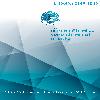Ön Çapraz Bağ ve Medial Menisküs Yırtığının Diz Ekstansiyon ve Fleksiyon İzokinetik Pik Tork Kuvvetine Etkisi ve Cybex Test Protokolü Uygulaması: Vaka Takdimi
Menisküs, Ön Çapraz Bağ, Pik Tork
The Effect Of Anterior Cruciate Ligament And Medial Meniscus Rupture On Knee Extension And Flexion Isokinetic Peak Torque Strength And Cybex Test Protocol: Case Report
Meniscus, Anterior Cruciate Ligament, Peak Torque,
___
- Aagaard, P., Simonsen, E.B., Beyer, N., Larsson, B., Magnusson, P. & Kjaer, M. (1997). Isokinetic muscle strength and capacity for muscular knee joint stabilization in elite sailors. International Journal of Sports Medicine, 18(7),521-525.
- Aagaard, P., Simonsen, E.B., Magnusson, S.P., Larsson, B. & Dyhre-Poulsen, P. (1998). A new concept for isokinetic hamstring: quadriceps muscle strength ratio. The American Journal of Sports Medicine, 26(2),231-237.
- Aagaard, P., Simonsen, E.B., Trolle, M., Bangsbo, J. & Klausen, K. (1995). Isokinetic hamstring/quadriceps strength ratio: influence from joint angular velocity, gravity correction and contraction mode. Acta Physiologica Scandinavica, 154(4),421-7.
- Agel, J., Olson, D.E. & Dick, R. (2007). Descriptive epidemiology of collegiate women's basketball injuries: National Collegiate Athletic Association Injury Surveillance System, 1988-1989 through 2003-2004. Journal of Athletic Training, 42,202–10.
- Arendt, E.A., Agel, J. & Dick, R. (1999). Anterior cruciate ligament injury patterns among collegiate men and women. Journal of Athletic Training, 34,86–92.
- Barber-Westin, S.D., Smith, S.T., Campbell, T. & Noyes, F.R. (2010). The drop-jump video screening test: retention of improvement in neuromuscular control in female volleyball players. The Journal of Strength & Conditioning Research, 24(11),3055-62.
- Bennell, K., Wajswelner, H., Lew, P., Schall-Riaucour, A., Leslie, S., Plant, D. & Cirone, J. (1998). Isokinetic strength testing does not predict hamstring injury in Australian Rules footballers. British Journal of Sports Medicine, 32(4),309-14.
- Boden, B.P., Griffin, L.Y. & Garrett, W.E., Jr. (2000). Etiology and prevention of noncontact ACL injury. The Physician and Sportsmedicine, 8,53–60.
- Chappell, J.D., Yu, B., Kirkendall, D.T. & Garrett, W.E. (2002). A comparison of knee kinetics between male and female recreational athletes in stop-jump tasks. The American Journal of Sports Medicine, 30,261–267.
- Croce, R.V., Pitetti, K.H., Horvat, M. & Miller, J. (1996). Peak torque, average power, and hamstrings/quadriceps ratios in nondisabled adults and adults with mental retardation. Archives of Physical Medicine and Rehabilitation, 77(4),369-72.
- Emerson, R.J. (1993). Basketball knee injuries and the anterior cruciate ligament. Clinics in Sports Medicine, 12(2),317-28.
- Hewett, T.E., Myer, G.D. & Ford, K.R. (2005). Biomechanical measures of neuromuscular control and valgus loading of the knee predict anterior cruciate ligament injury risk in female athletes: a prospective study. The American Journal of Sports Medicine, 33,492–501.
- Hewett, T.E., Myer, G.D. & Ford, K.R. (2006). Anterior cruciate ligament injuries in female athletes: Part 1, mechanisms and risk factors. The American Journal of Sports Medicine, 34(2),299-311.
- Holmes, J.R. & Alderink, G.J. (1984). Isokinetic strength characteristics of the quadriceps femoris and hamstring muscles in high school students. Physical Therapy, 64(6),914-8.
- Huston, L.J. & Wojtys, E.M. (1996). Neuromuscular performance characteristics in elite female athletes. The American Journal of Sports Medicine, 24,427–36. doi: 10.1177/036354659602400405.
- Ireland, M.L. (2002). The female ACL: why is it more prone to injury? Orthopedic Clinics of North America, 33,637–51. doi: 10.1016/S0030-5898(02)00028-7.
- Laird, D.E. (1981). Comparison of quad to ham strength ratios of an intercollegiate soccer team. Athletic Training, 16,66–67.
- Li, R.C., Maffulli, N., Hsu, Y.C. & Chan, K.M. (1996). Isokinetic strength of the quadriceps and hamstrings and functional ability of anterior cruciate deficient knees in recreational athletes. British Journal of Sports Medicine, 30(2),161-4.
- Lohmander, L.S., Ostenberg, A., Englund, M. & Roos, H. (2004). High prevalence of knee osteoarthritis, pain, and functional limitations in female soccer players twelve years after anterior cruciate ligament injury. Arthritis & Rheumatology, 50,3145–52. doi: 10.1002/art.20589.
- Lund-Hanssen, H., Gannon, J., Engebretsen, L., Holen, K. & Hammer, S. (1996). Isokinetic muscle performance in healthy female handball players and players with a unilateral anterior cruciate ligament reconstruction. Scandinavian Journal of Medicine & Science in Sports, 6(3),172-5.
- Noyes, F.R., Barber-Westin, S.D., Smith, S.T., Campbell, T. & Garrison, T.J. (2012). A training program to improve neuromuscular and performance indices in female high school basketball players. The Journal of Strength & Conditioning Research, 26(3),709-19.
- Raunest, J., Sager, M. & Bürgener, E. (1996). Proprioceptive mechanisms in the cruciate ligaments: An electromyographic study on reflex activity in the thigh muscles. The Journal of Trauma, 41(3),488-93.
- Voskanian, N. (2013). Injury prevention in female athletes: review of the literature and practical considerations in implementing an ACL prevention program. Current Reviews in Musculoskeletal Medicine, 6(2), 158–163.
- Yayın Aralığı: 2
- Başlangıç: 1995
- Yayıncı: Manisa Celal Bayar Üniversitesi, Spor Bilimleri Fakültesi
Gulsum BASTUG, Muhammet SAY, Çağatay DERECELİ
İbrahim CAN, Serdar BAYRAKDAROĞLU
İş Stresinin Spor Antrenörlerinin İş Performansına Etkisinin İncelenmesi
Süleyman Murat YILDIZ, İlker GÜNEL, Mehdi DUYAN
Türkiye Paralimpik Takımlar Ağız-Diş Sağlığı Profili
Osman Hamamcılar, Adnan Hasanoğlu
Gökhan UMUTLU, Ayhan Taner ERDOĞAN, Nasuh Evrim ACAR
Genç Futbolculara Uygulanan FIFA 11+ Eğitim Programının Performans Üzerine Etkisi
Erdil DURUKAN, Mehmet GÖKTEPE, Emrah AKÇA
Üniversite Öğrencilerinin Spora Katılım Durumlarına Göre Rekabetçi Tutumlarının İncelenmesi
Çisem DEMİRDÖKEN, Gamze Deryahanoğlu, Serkan DEMİRDÖKEN, Elif Aybike ÜNLÜ
Öğrencilerin Zorbalık Davranışı Eğilimlerinin Spora Katılım Açısından İncelenmesi
